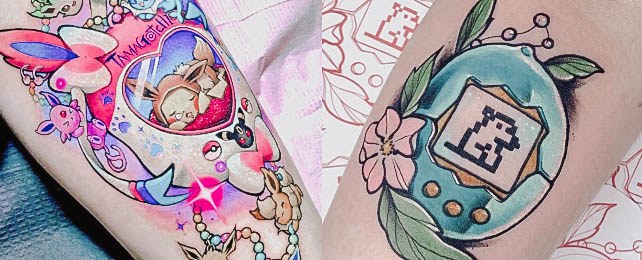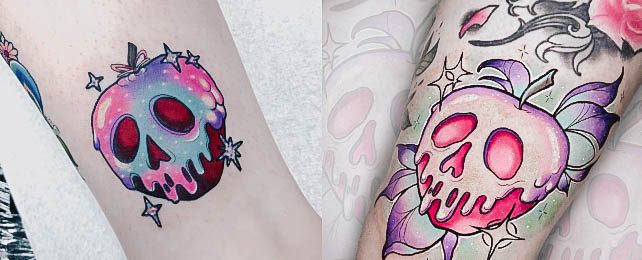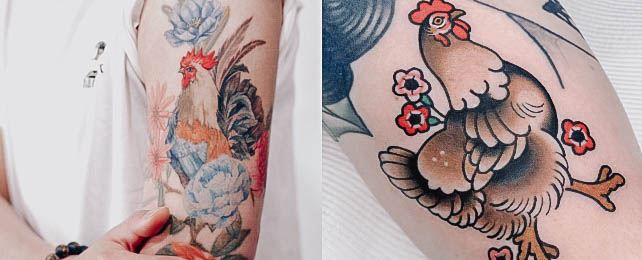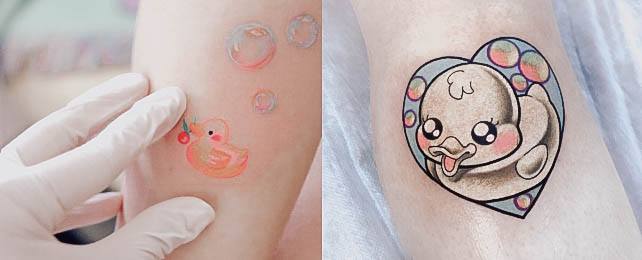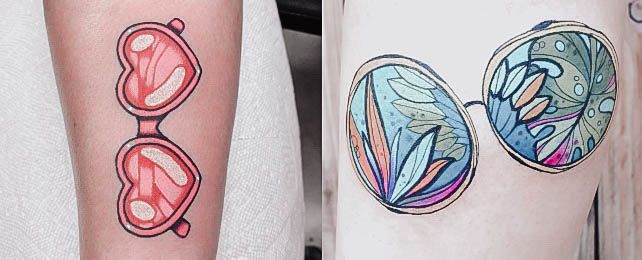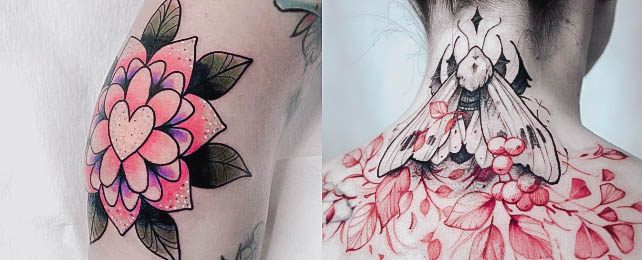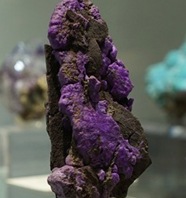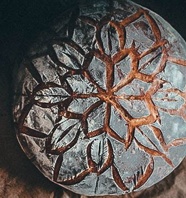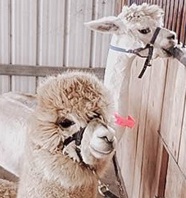This virtual pet still expected to be “fed”, “watered”, and “played” with on a regular basis like a living pet, and it would die like a real animal if you failed to take care of it.
The Tamogotchi game was on a keychain so you would not forget to take your “pet” with you wherever you went. As a tattoo, you will be taking your Tamogotchi everywhere too. Ergo, you can choose to leave the keychain part off of the tattoo, or leave it on to help people readily recognize what the tattoo is. If you inscribe the top of the “game” with the actual word “Tamogotchi”, you could probably skip adding the chain to the tattoo.
The symbolism of a Tamogotchi toy has multiple levels. On the surface, it represents a retro toy ’90’s kids remember and love. It represents the resurgence of something popular that you can get again in stores. It represents the boom of the video game era, and the desire to taking gaming with you everywhere.
On another level, it represents fun, responsibility, love of pets, caring for others, remembering things that need to be done, being a good friend, etc..
It has buttons to push, but they’re good buttons and others around you should know what those good buttons are. It can also represent inclusion, as including someone or something important in your life that cannot and should not be ignored.

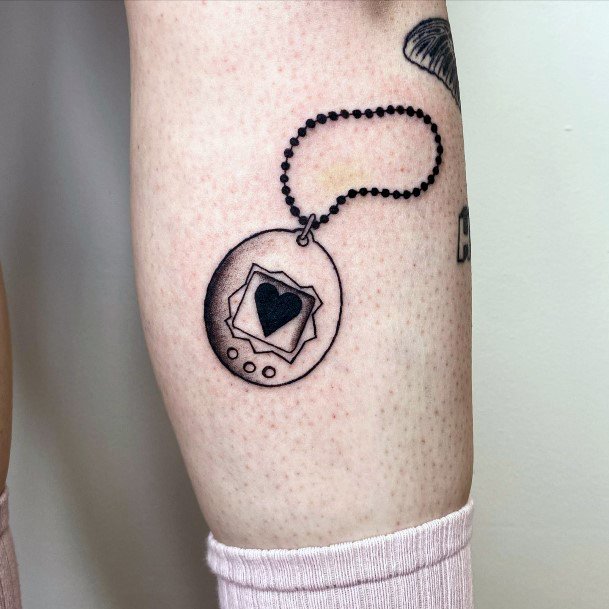
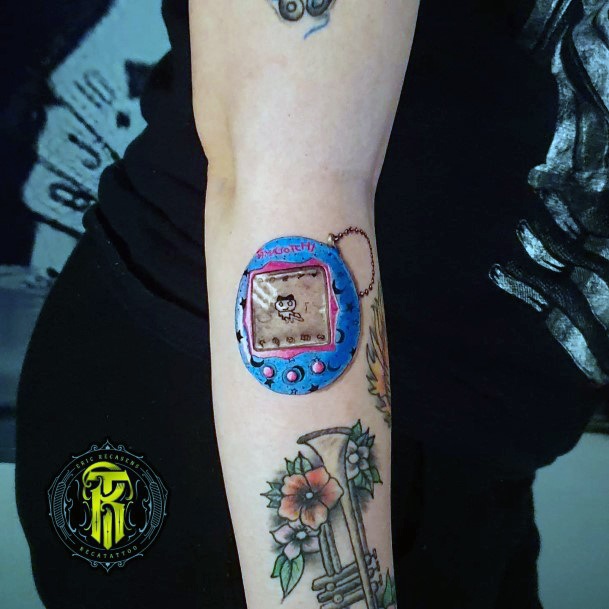
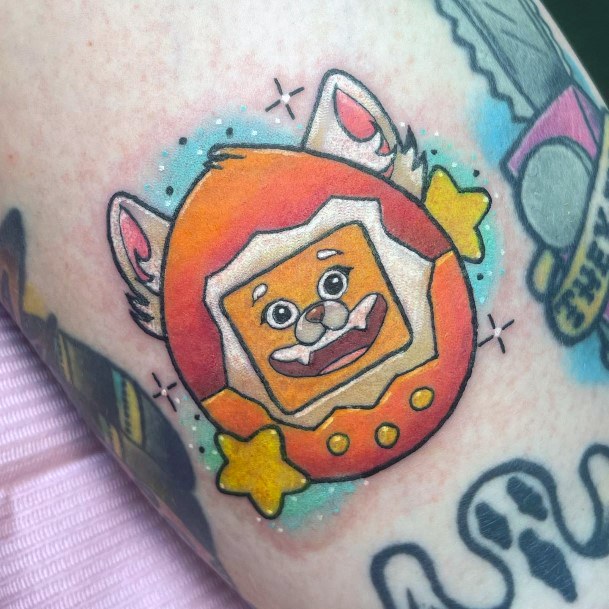
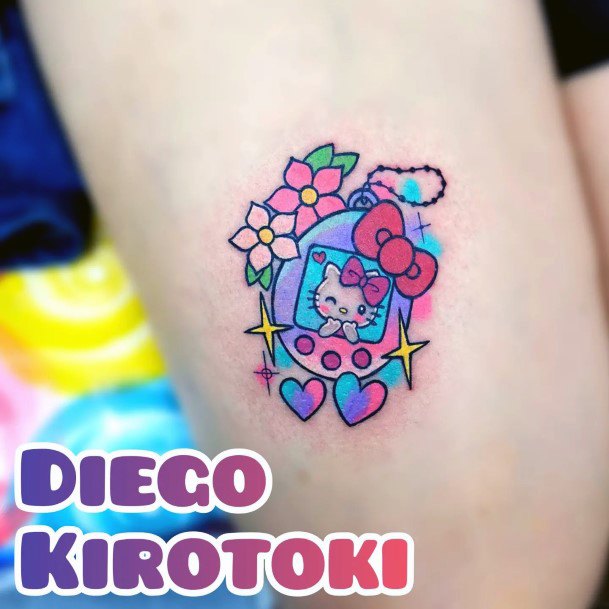
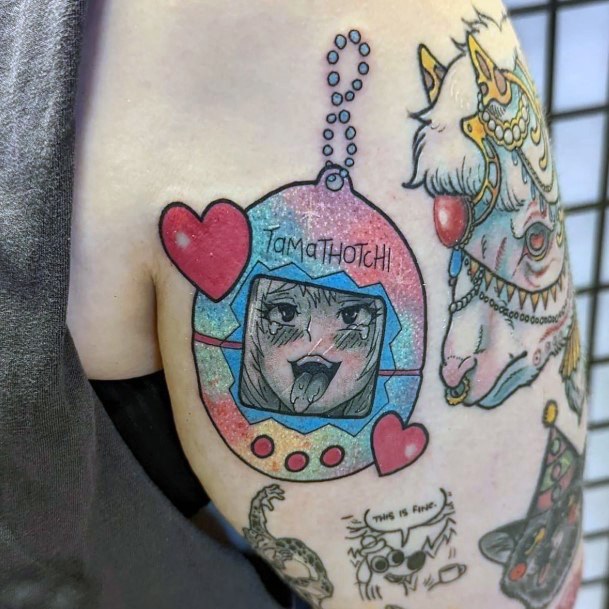
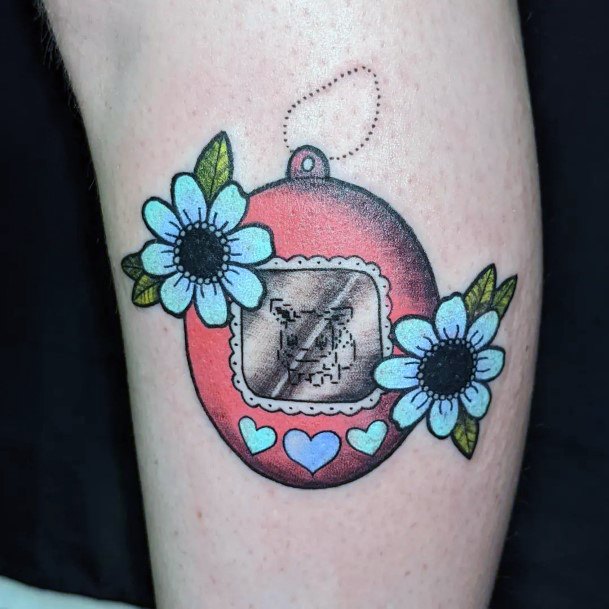
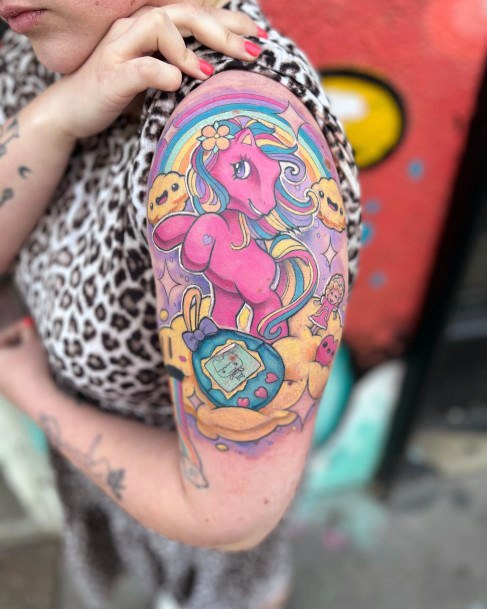

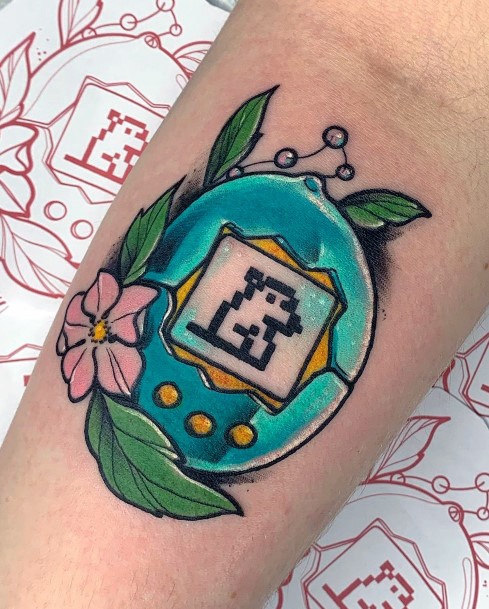
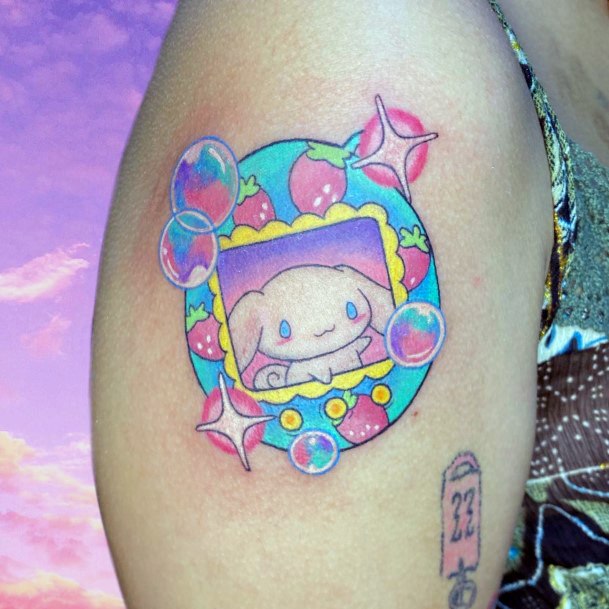
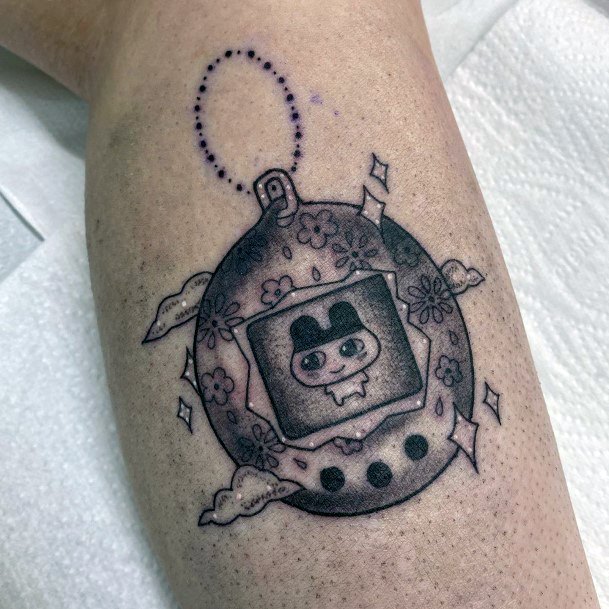
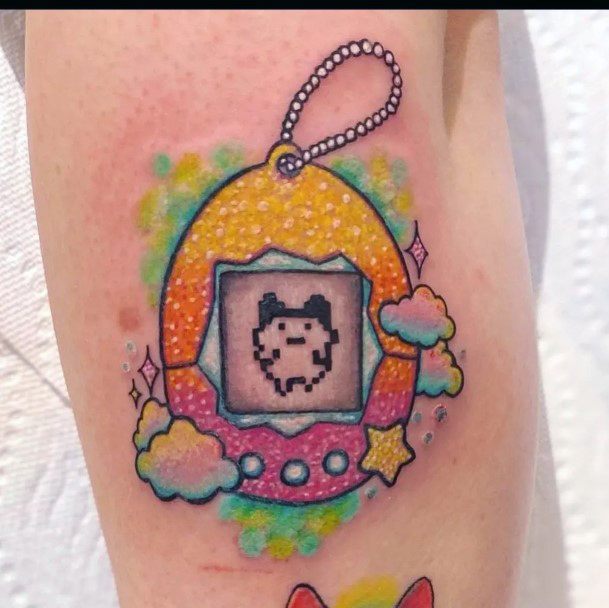
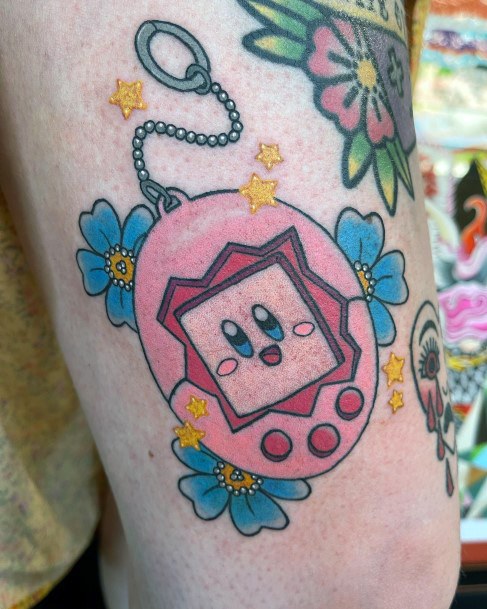
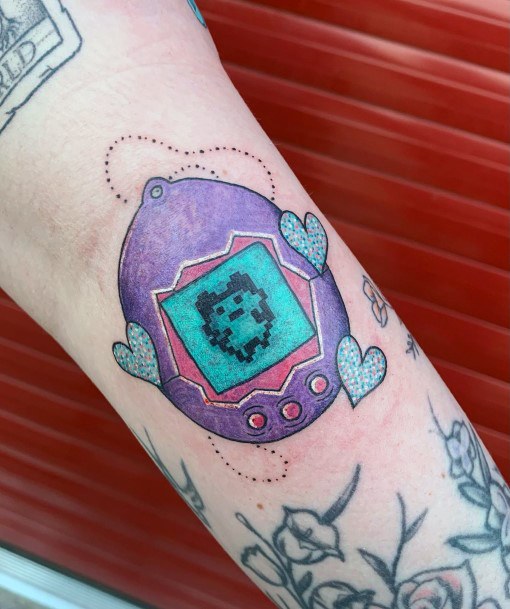
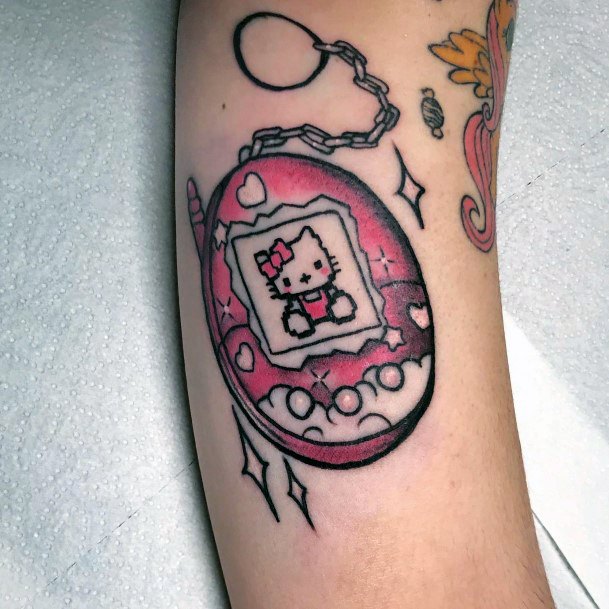
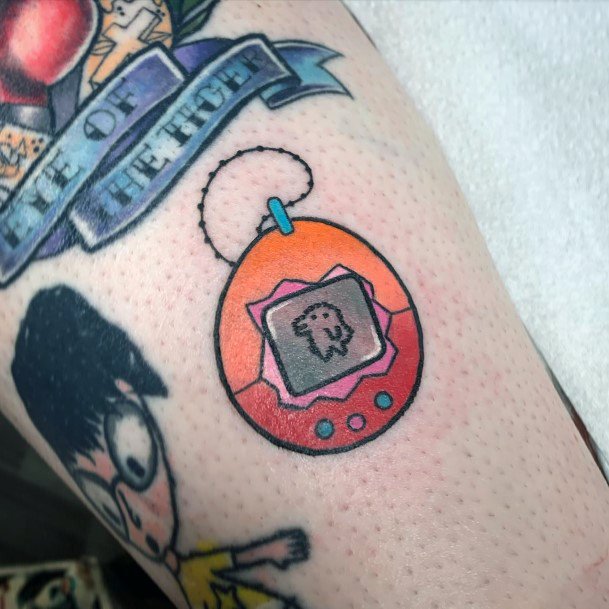
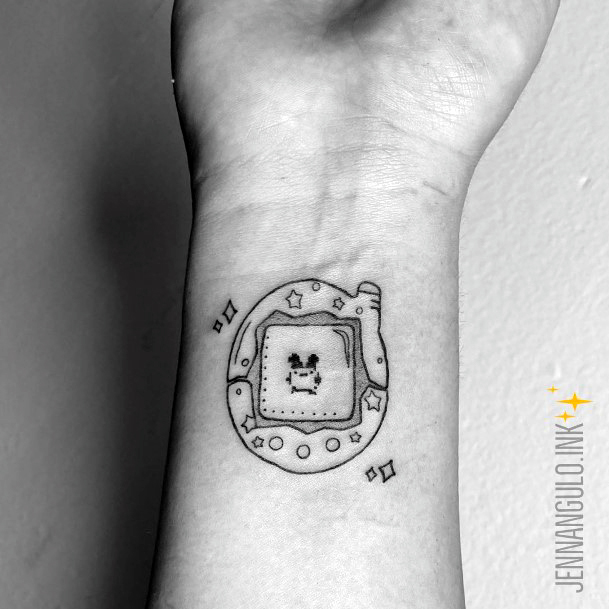
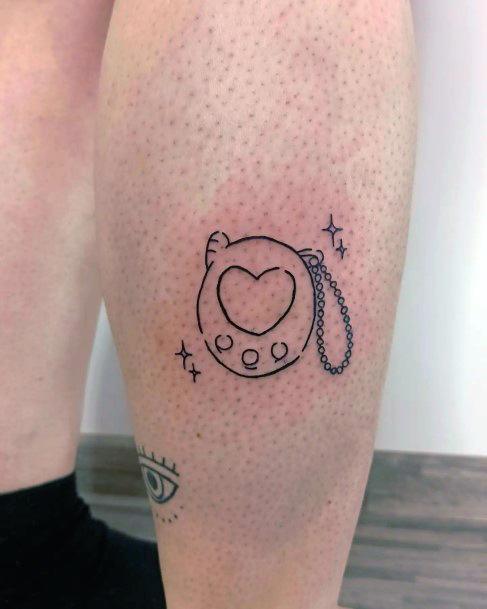
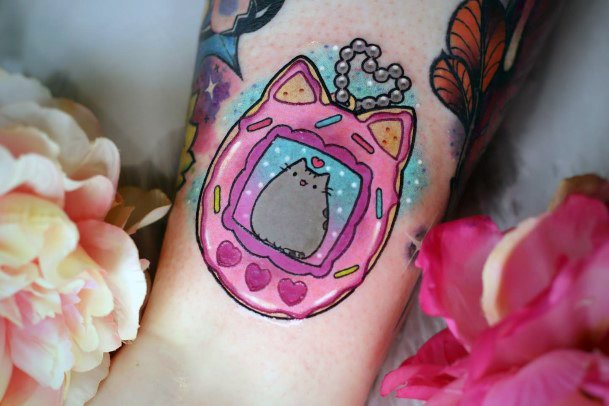
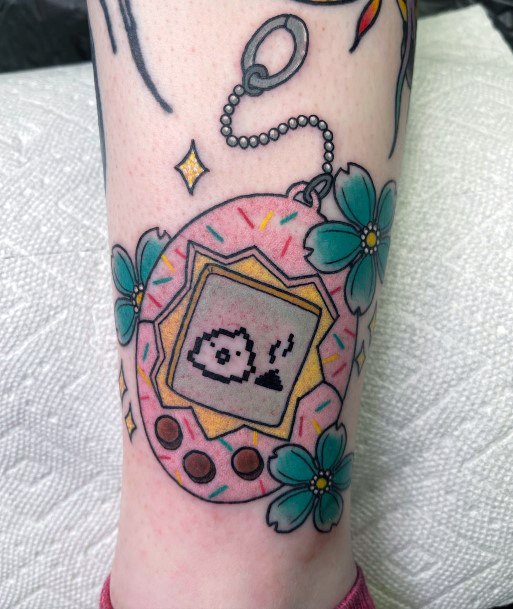
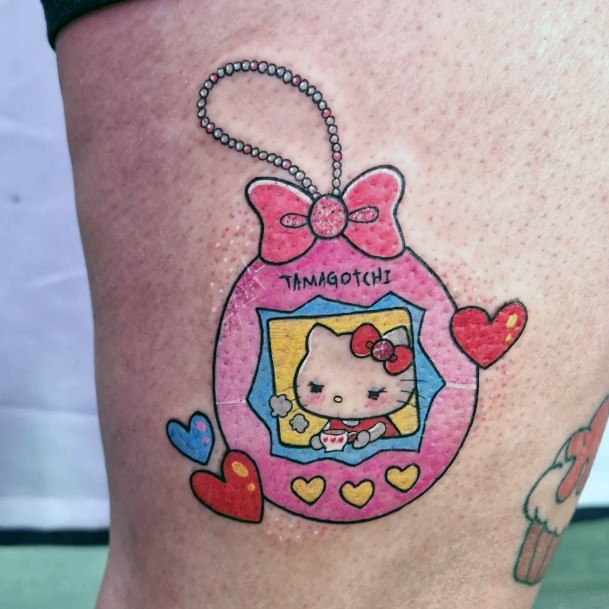

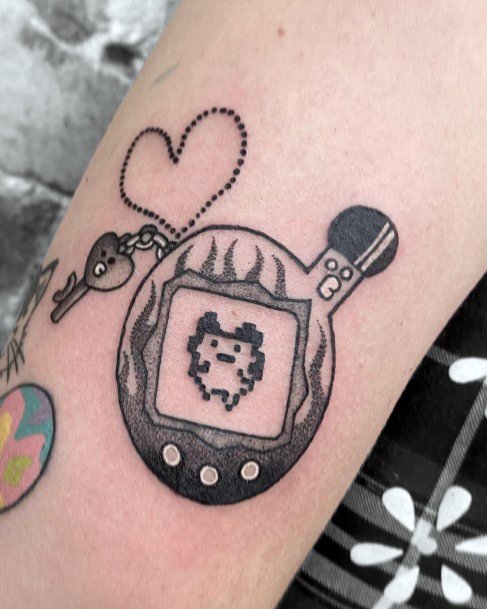
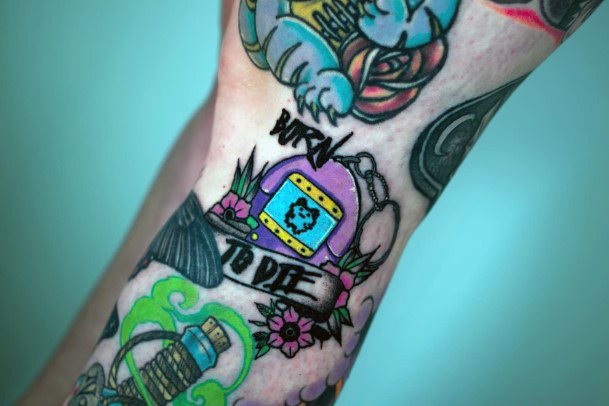
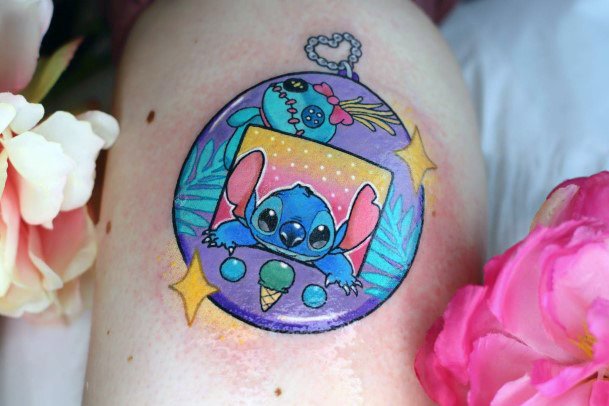
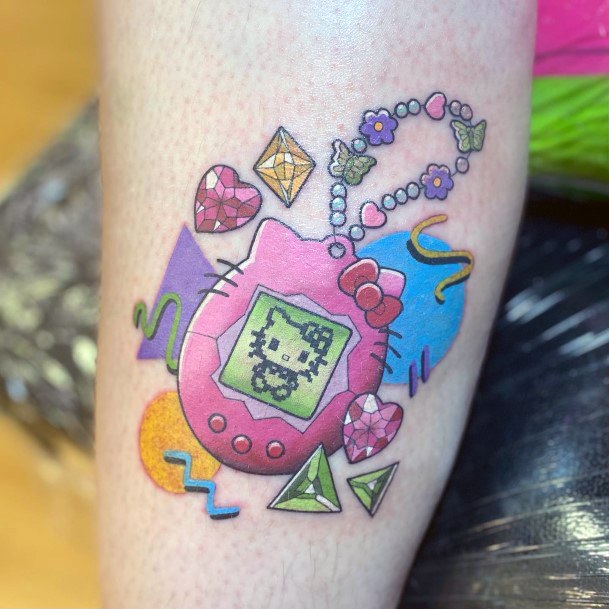

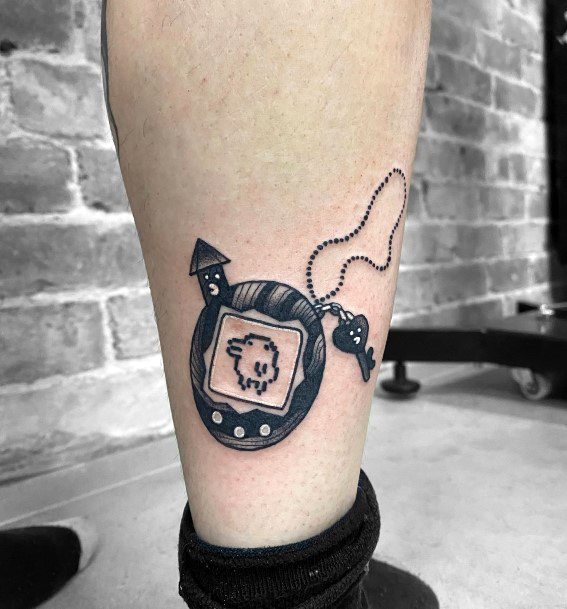
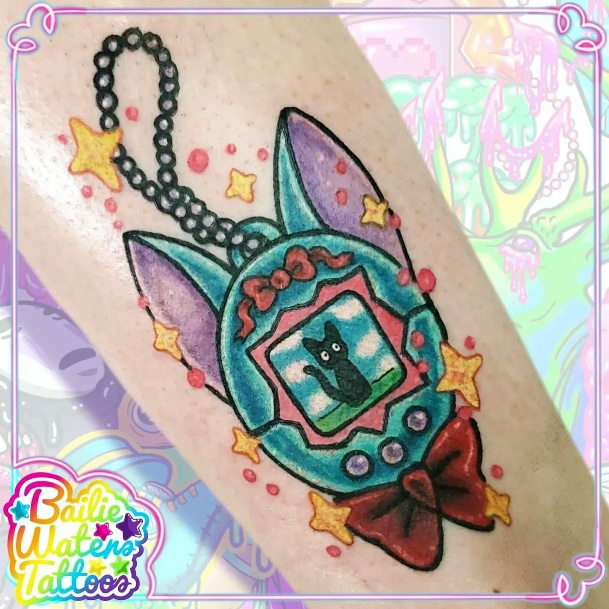

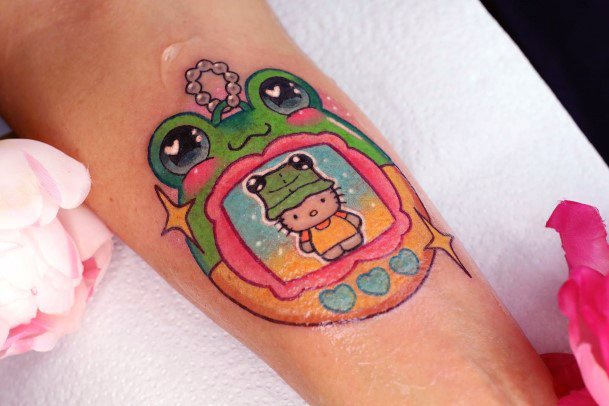
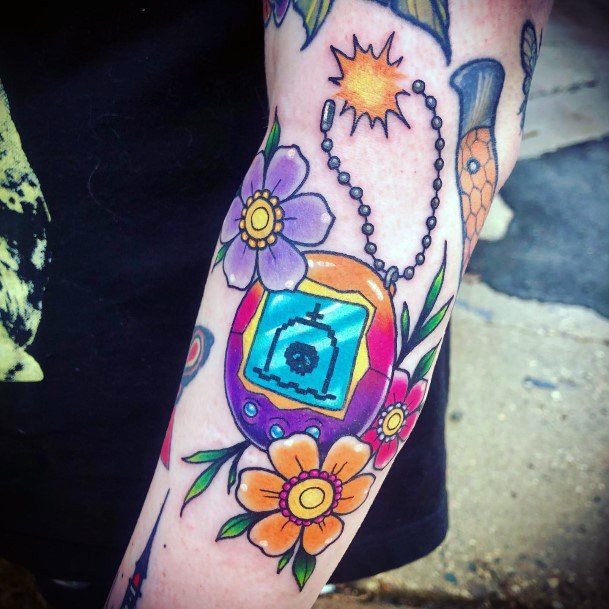
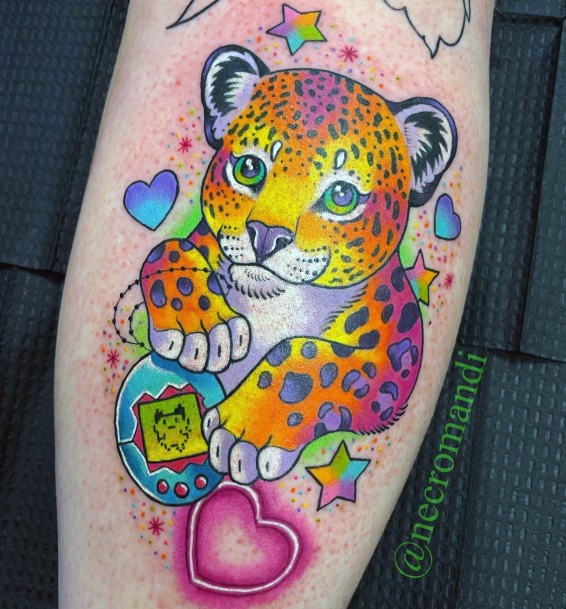

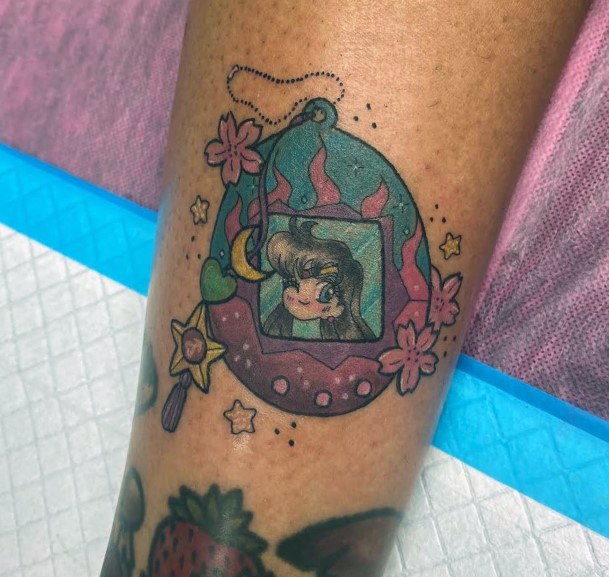
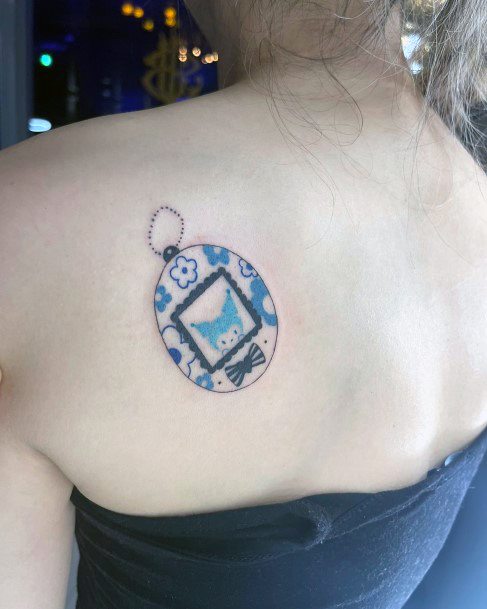
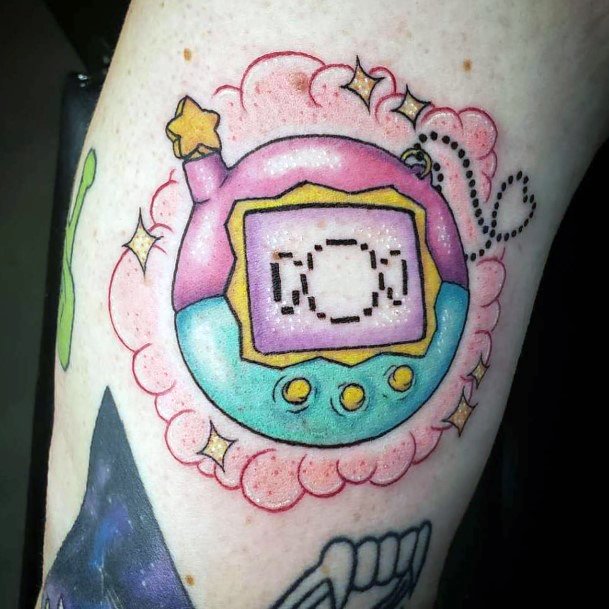

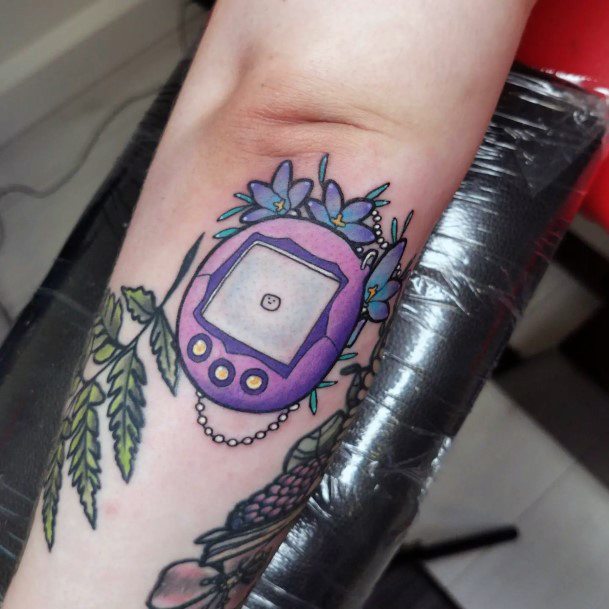

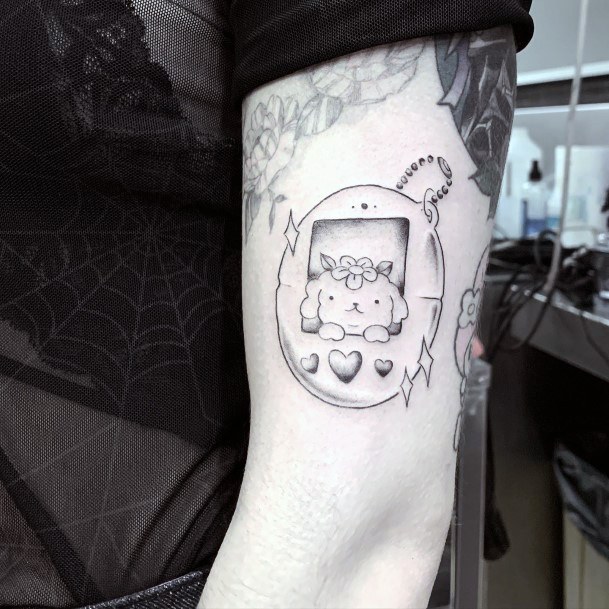


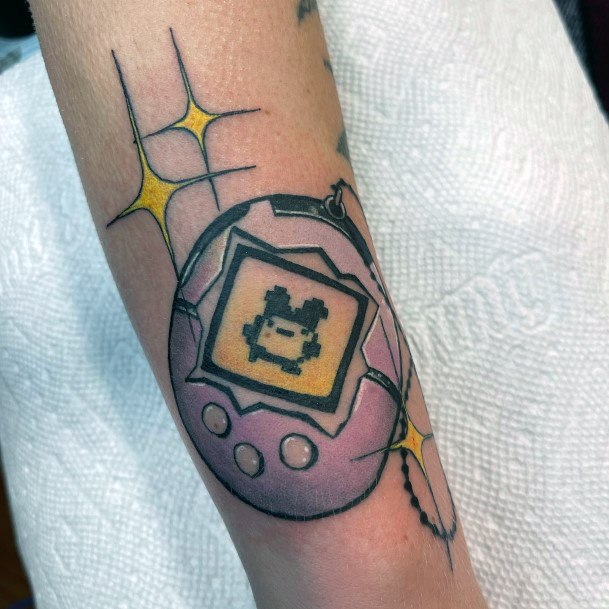
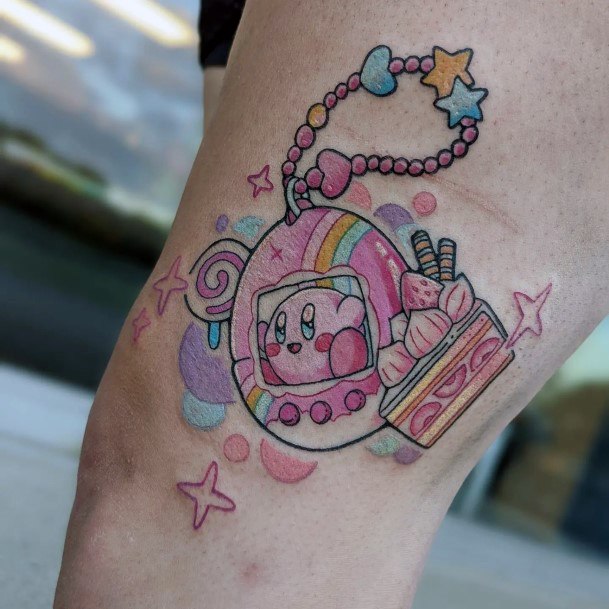
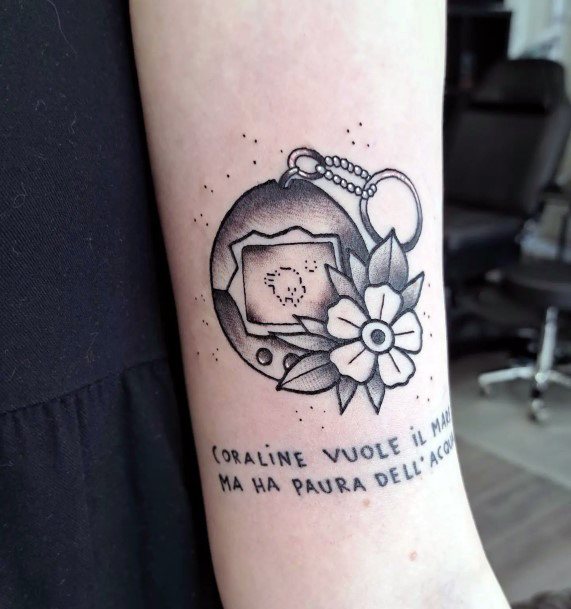
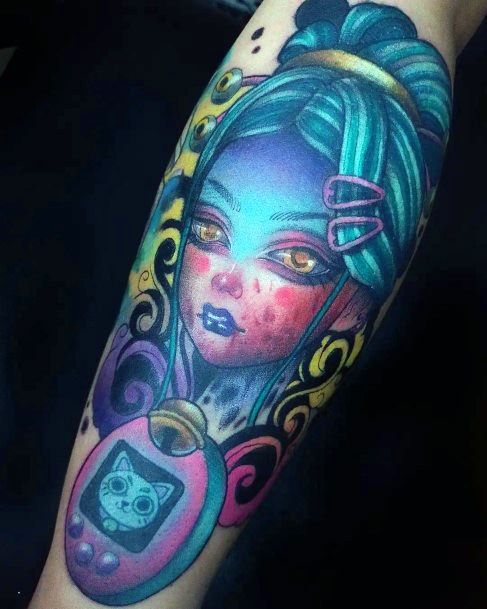
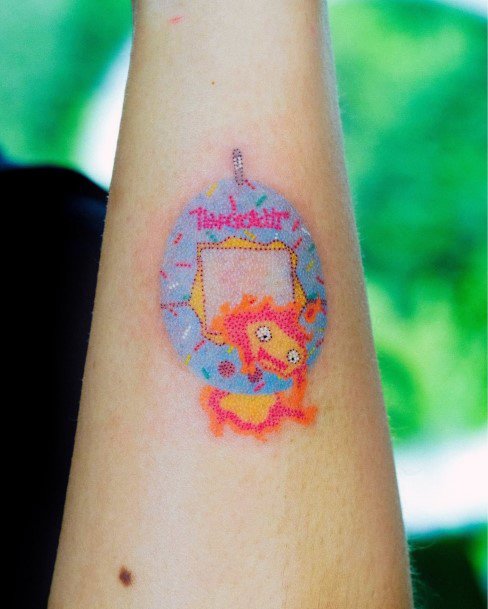

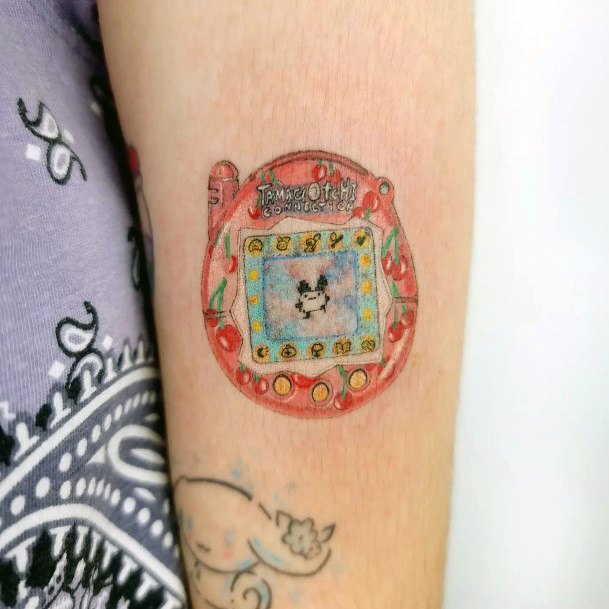


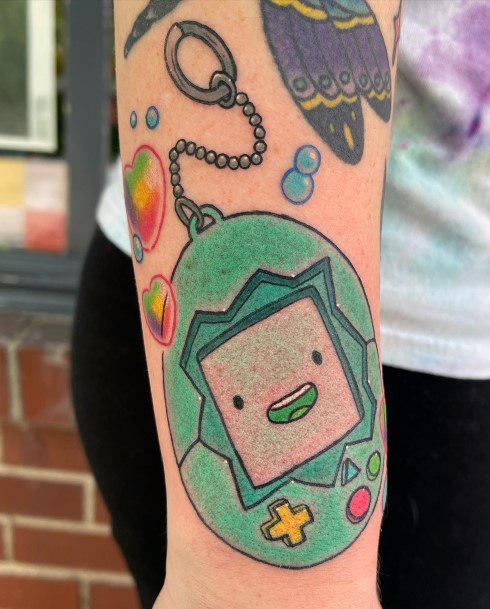
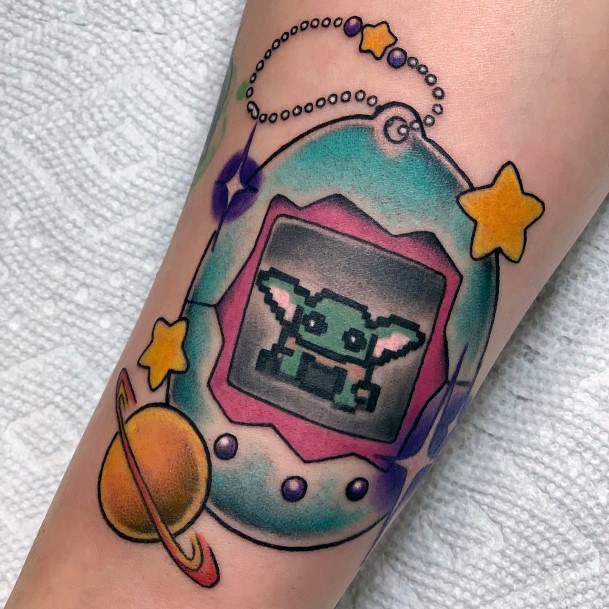

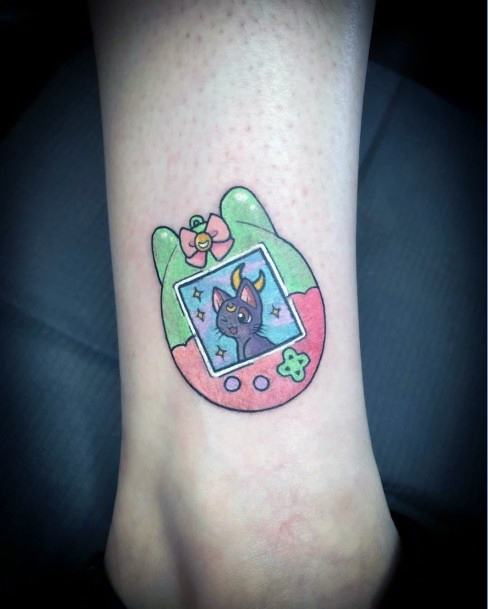
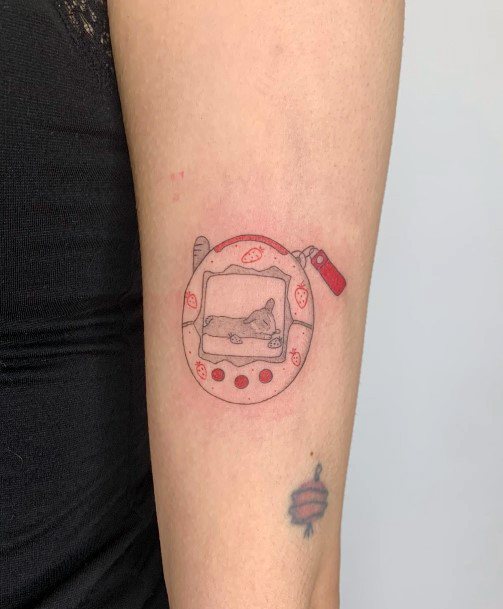
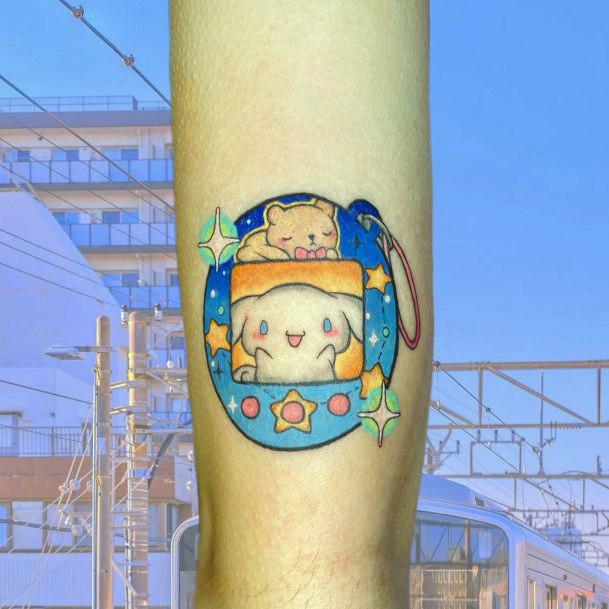
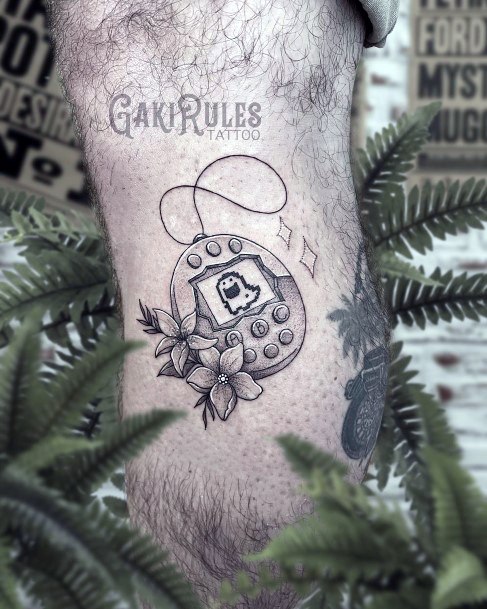
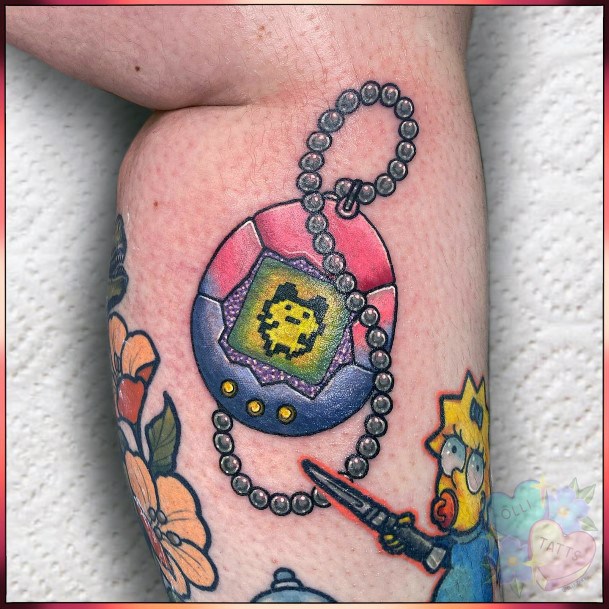
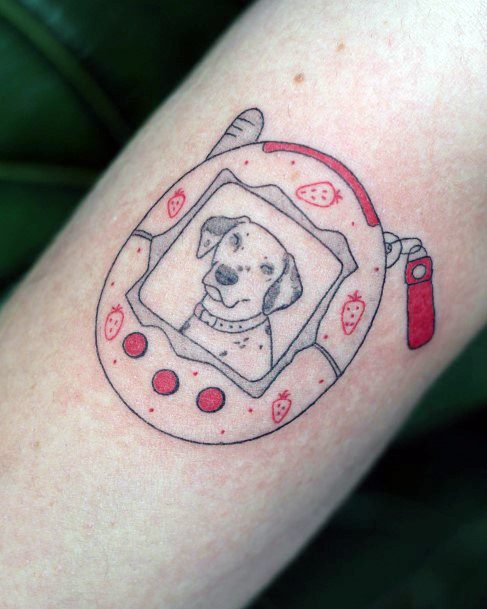
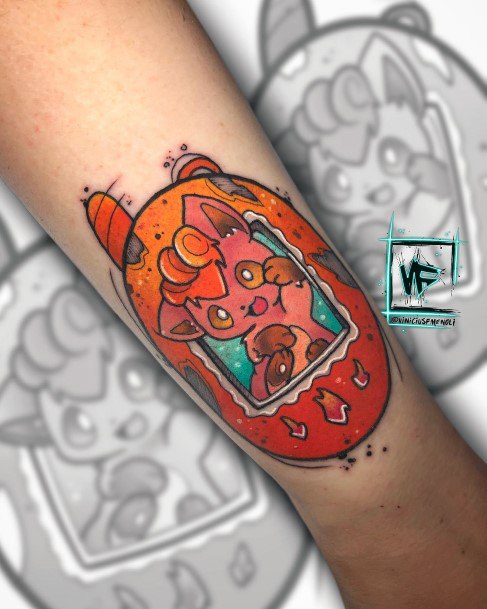
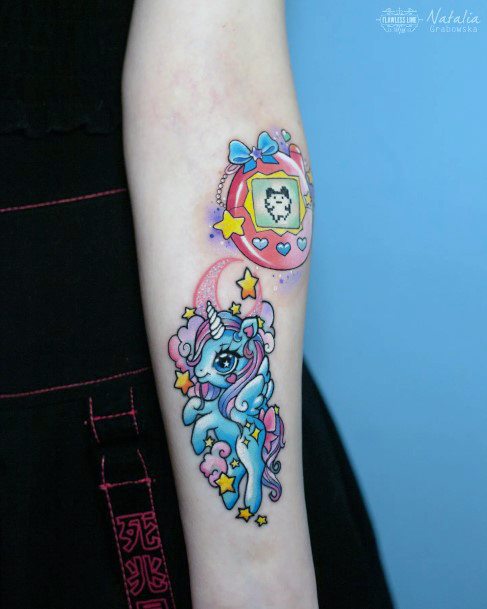

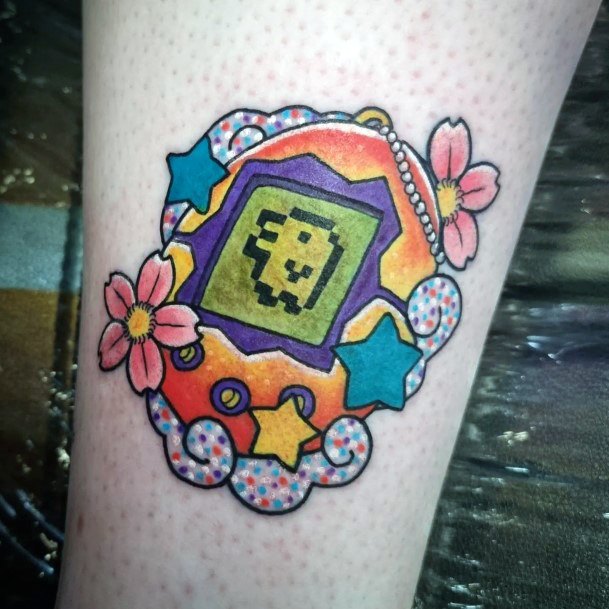
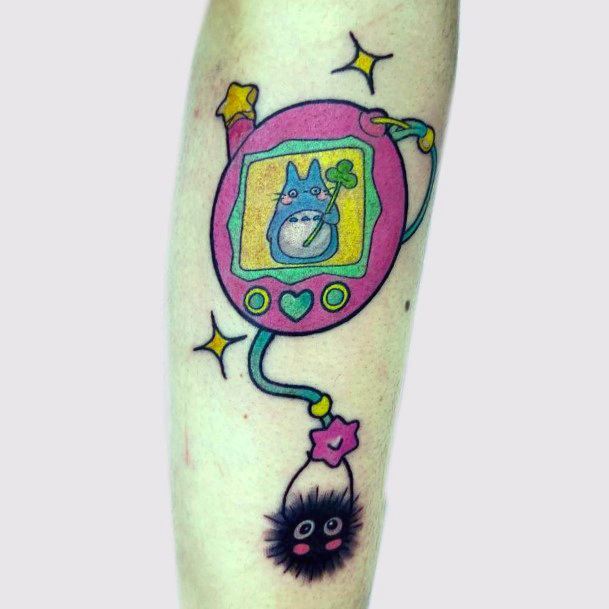
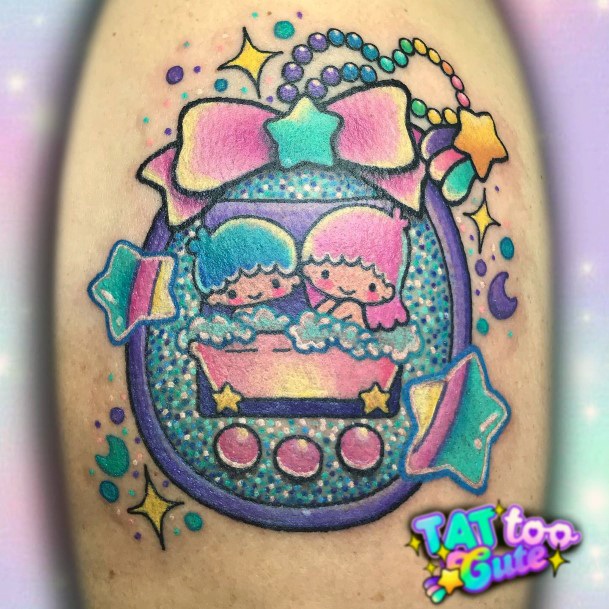
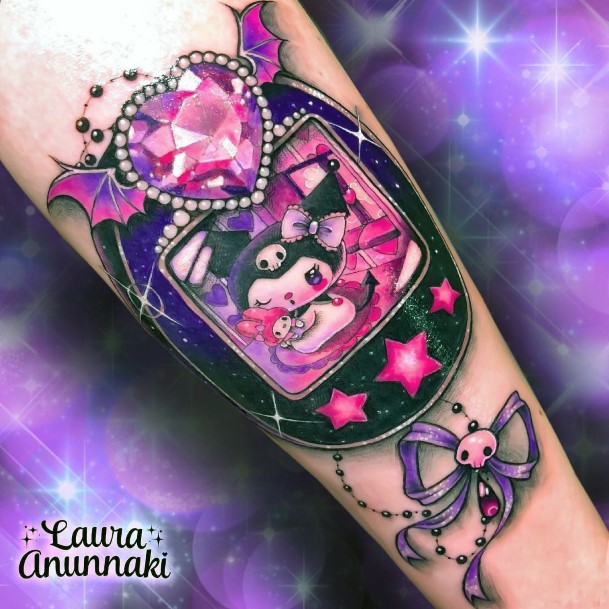
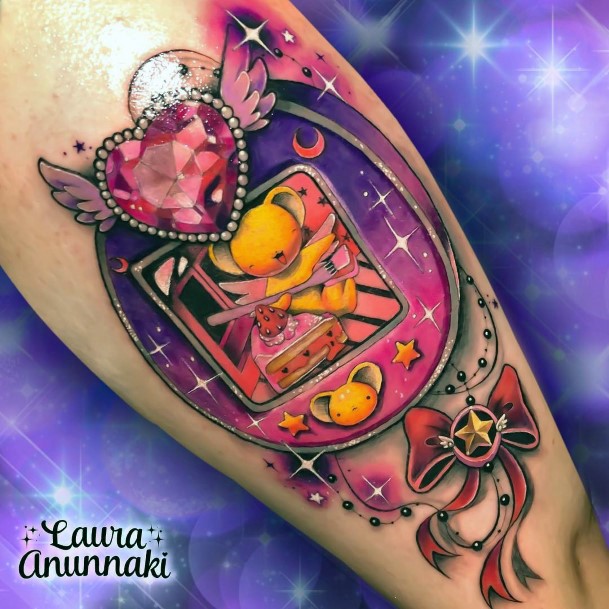
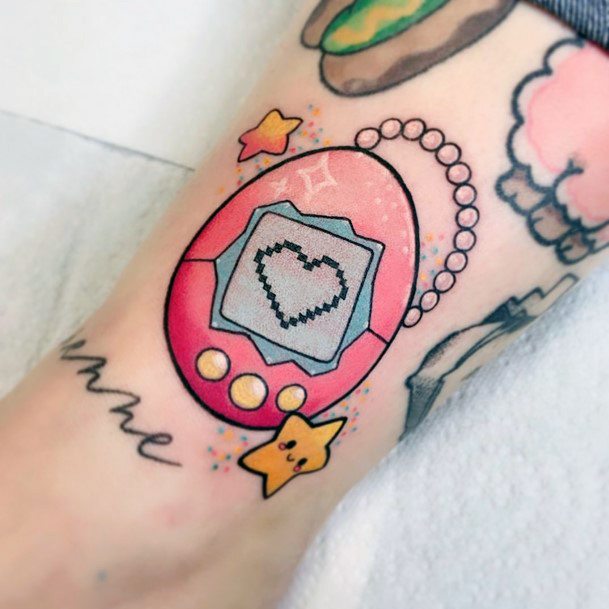
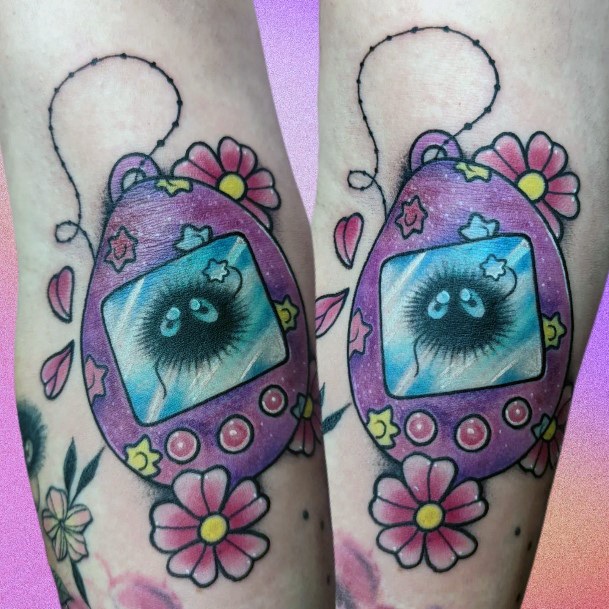
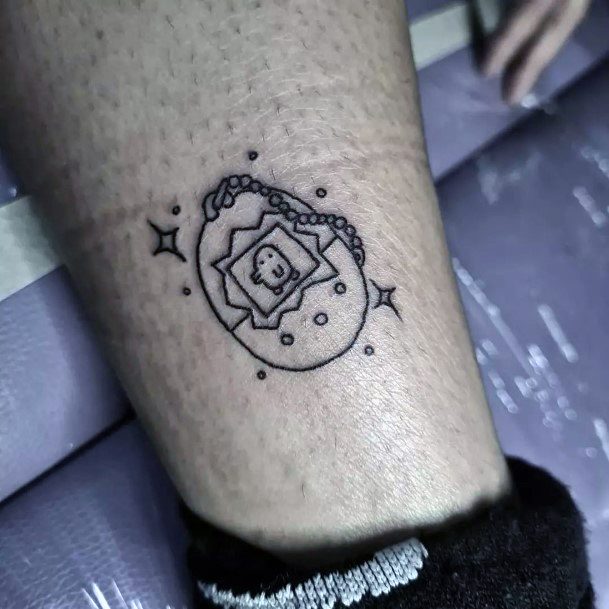

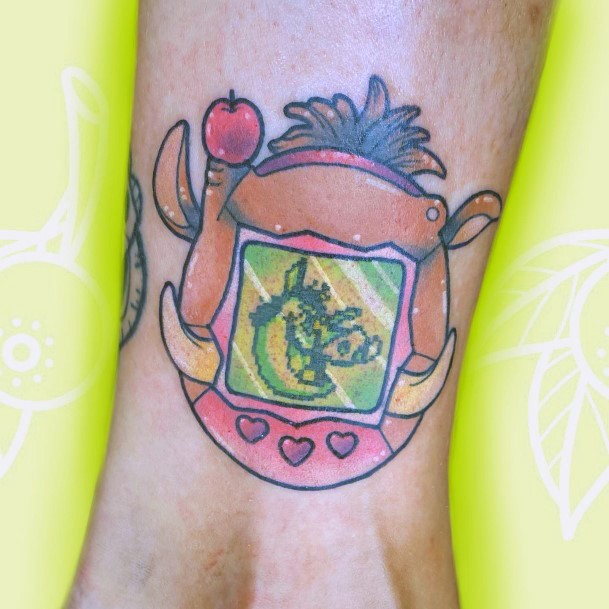
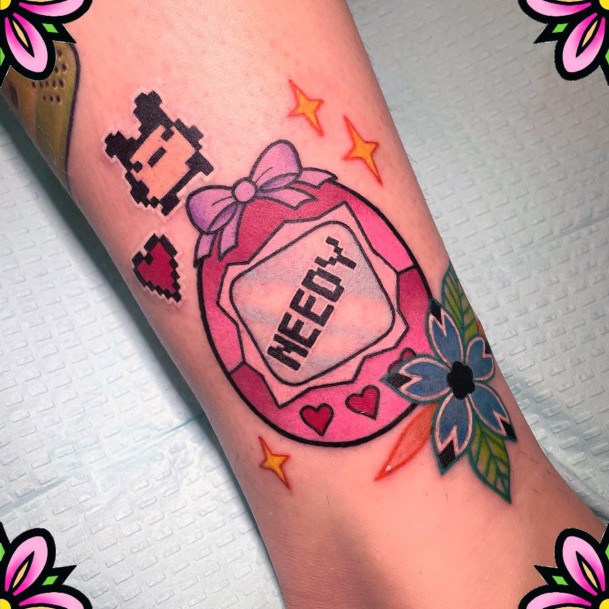
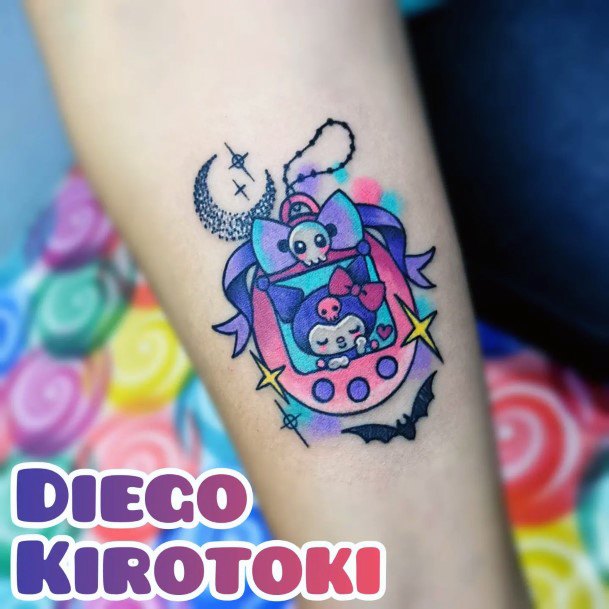
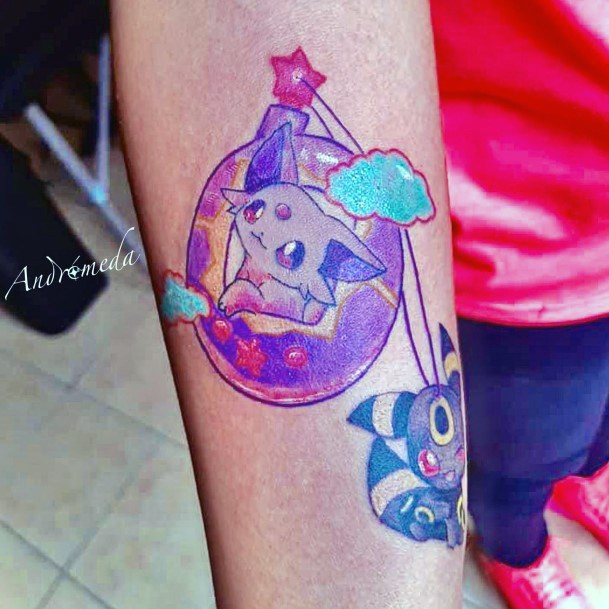
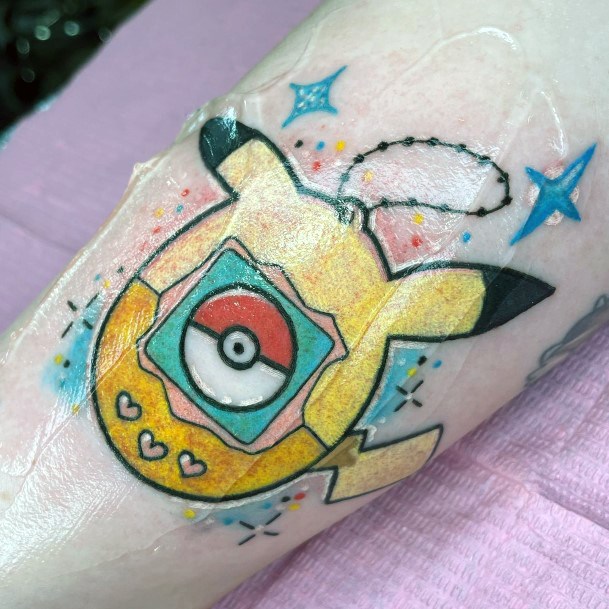
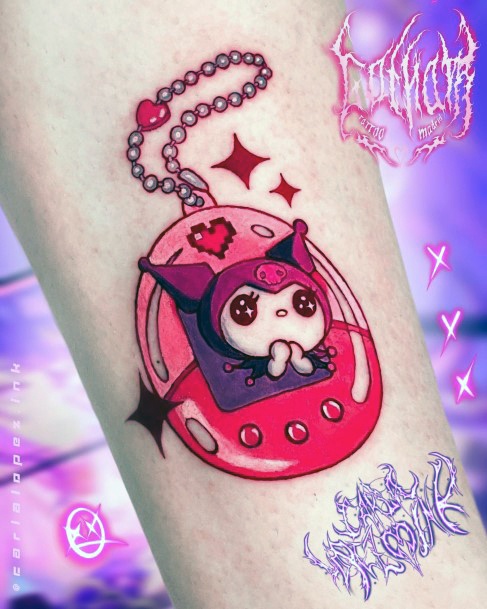
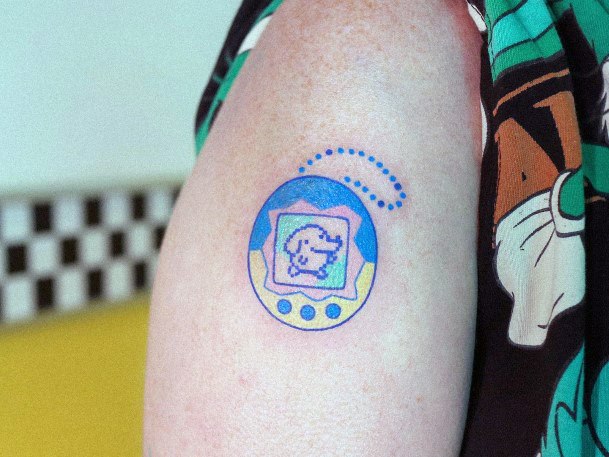
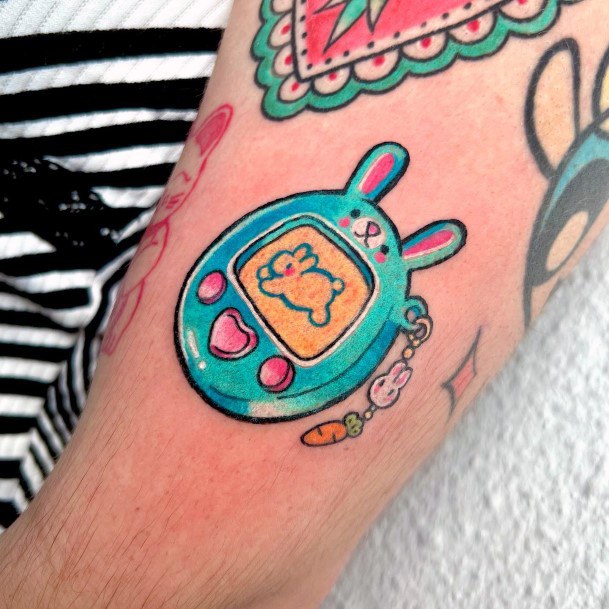

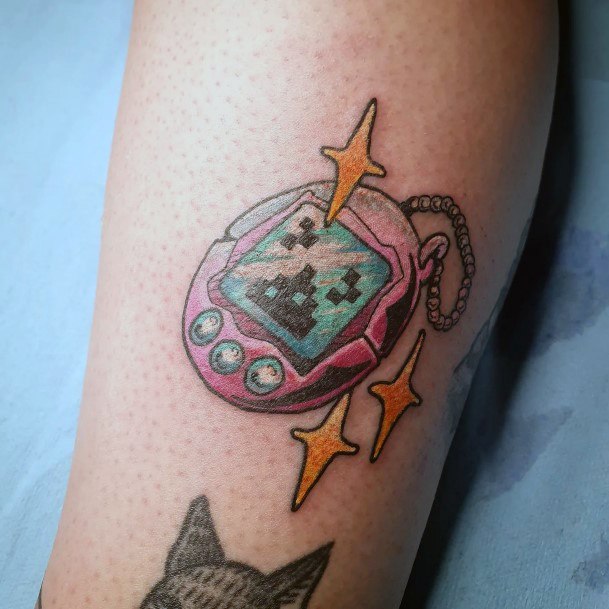
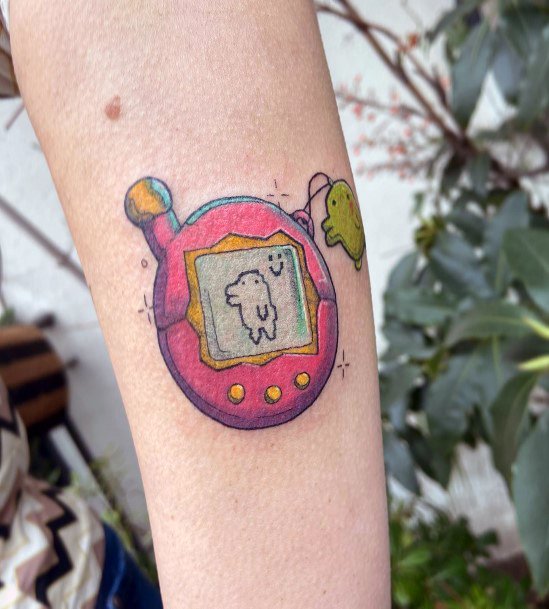

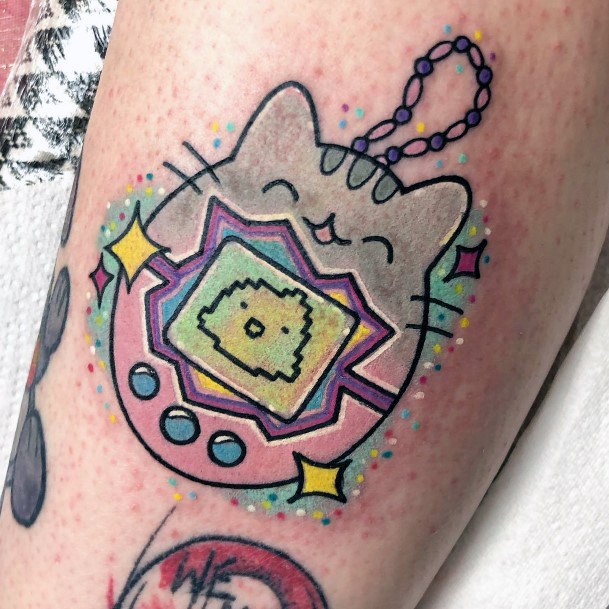
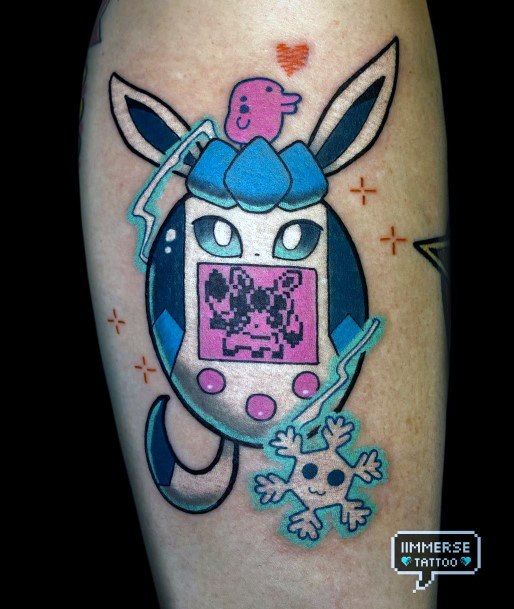
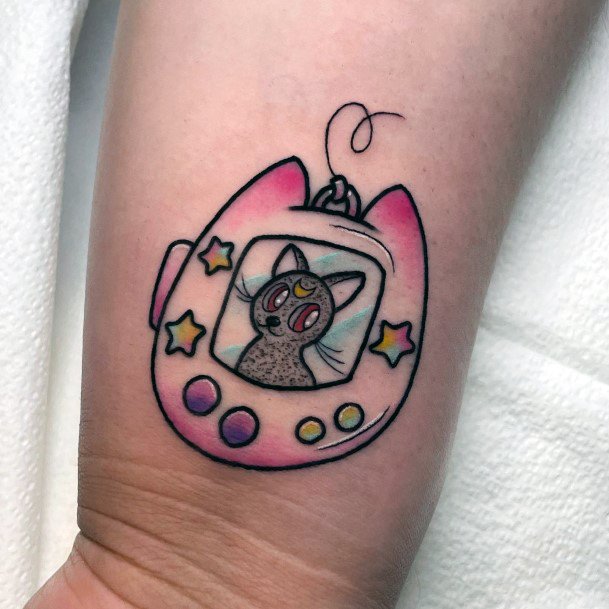
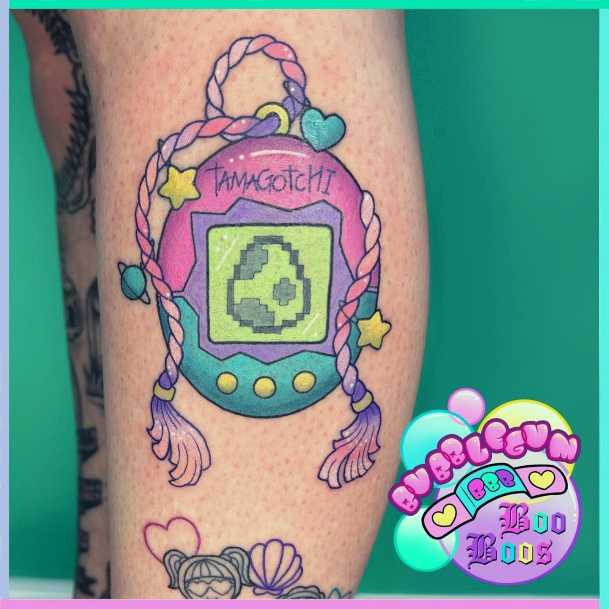
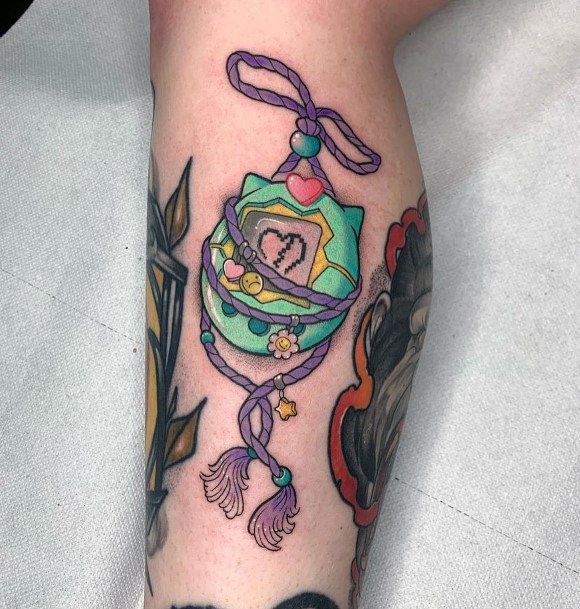
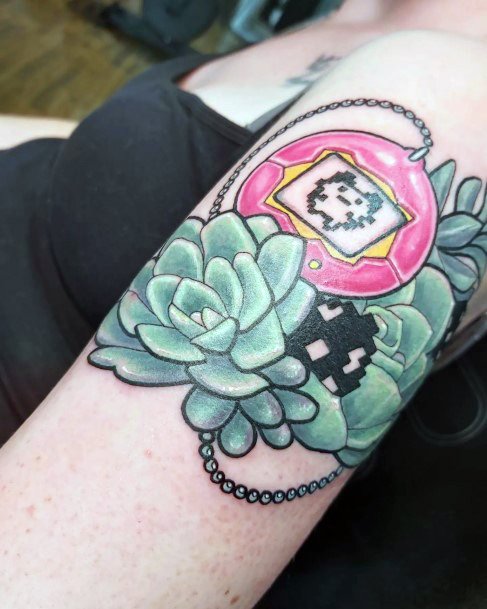
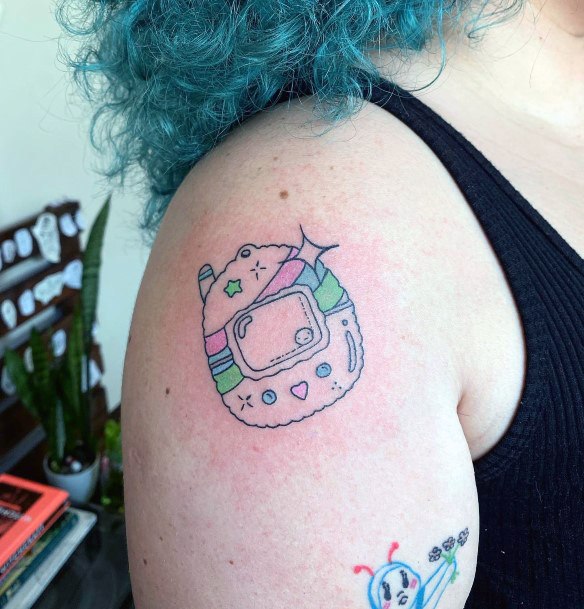
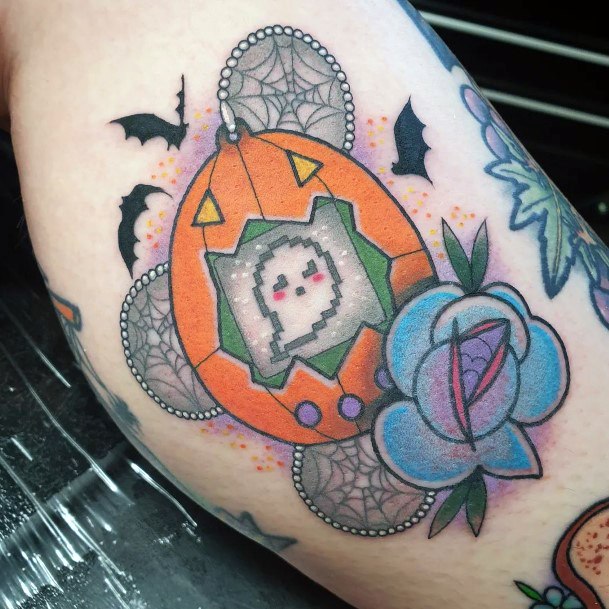
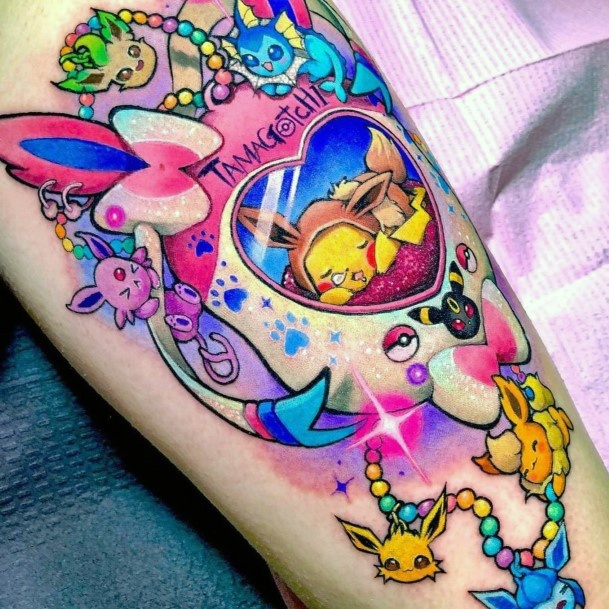


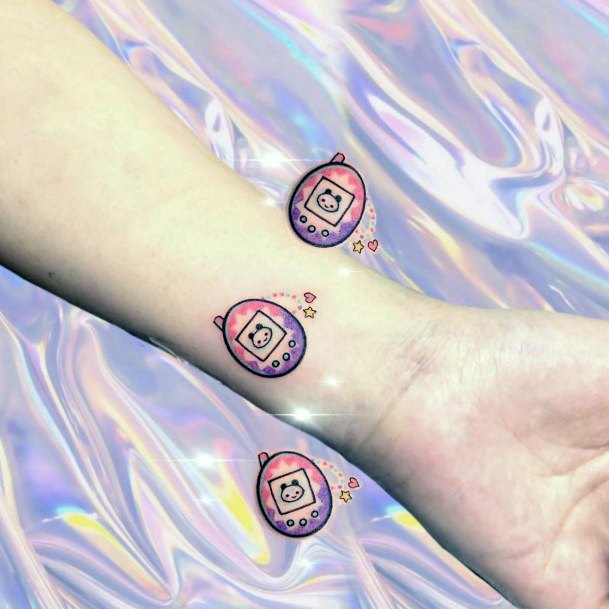
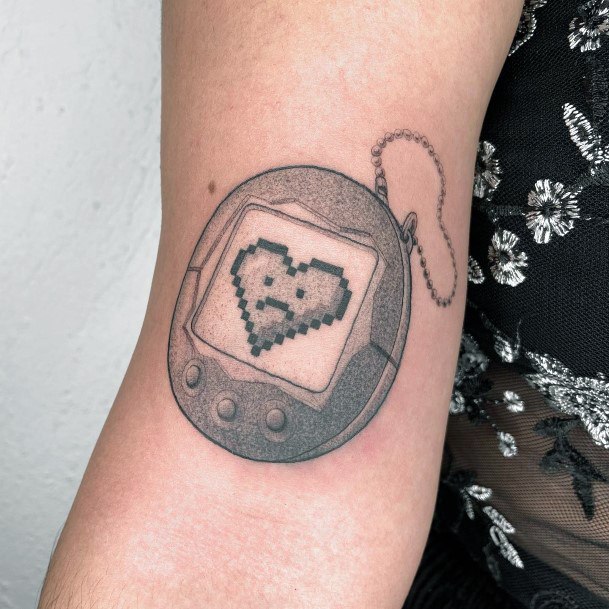
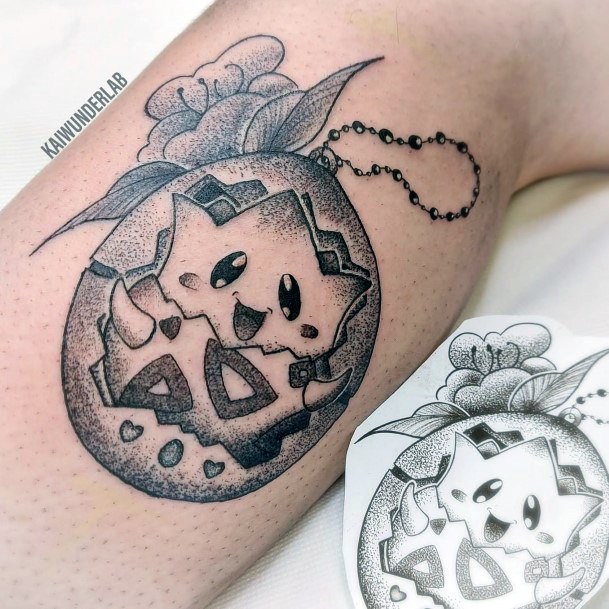
Tamagotchi tattoo meanings and symbolism:
What do Tamagotchi themed designs mean and symbolize?: The Tamagotchi is a symbol of responsibility and nurturing. The goal of the game is to keep your Tamagotchi alive, which requires attentive care and an understanding of its needs. You must feed it when it’s hungry, clean up after it when necessary, and provide it with attention and love. If you fail to do so, then your Tamagotchi will die, just like any other living creature. This mirrors the real responsibilities of parenting and caring for another life, and it teaches children (and adults) valuable lessons about taking care of others. The Tamagotchi also represents the idea of mortality. Its life cycle is short—just a few days—and its death is inevitable no matter how well you take care of it. This emphasizes the idea of impermanence and reminds us that life is fleeting, so we should make the most out of every moment. This can be applied to more than just our relationships with others; it can also be used as a reminder to make sure that we’re living life to the fullest and not wasting precious time on trivial matters.
The design of the Tamagotchi also has hidden symbolic meaning. The egg-shaped design implies birth and growth, which ties in nicely with the theme of nurturing mentioned earlier. Additionally, the colors used for different versions have specific meanings; for example, pink represents love and affection while blue stands for trustworthiness. These colors are meant to represent the emotions associated with taking care of someone or something else—feelings such as love, compassion, loyalty, trustworthiness, etc.—which reflects the importance of showing these emotions in our real lives as well.
Furthermore, the development cycle of a Tamagotchi mirrors our own life cycle in some ways. When you first get your Tamagotchi, it’s in its infancy stage; as you take care of it over time, it will steadily grow into adulthood before aging back into infancy again after a certain amount of time has passed. This cyclical nature mirrors our own lives in that we too start off as infants before gradually maturing into adults before ultimately returning to dust in our later years—a reminder to make sure that we’re living each stage fully and not taking any part for granted.
The symbolism behind the Tamagotchi goes far beyond its basic mechanics; its design reflects themes such as responsibility, nurturing, mortality, growth cycles, and emotions associated with caring for someone else. As an iconic toy from childhoods past (and present), the Tamagotchi offers us an opportunity to reflect on important life lessons we learned from it—lessons that can still be applied today even after all these years since its release.
